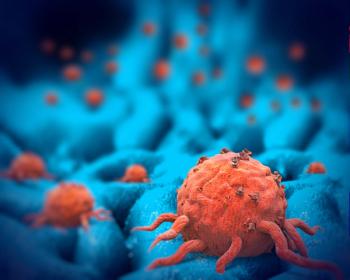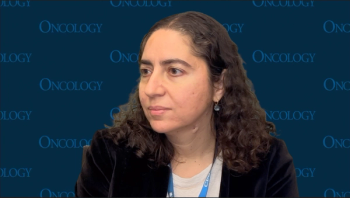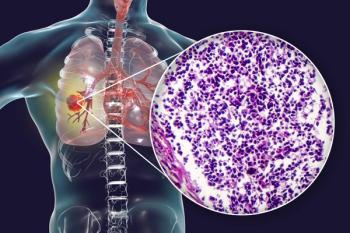
Tigilanol Tiglate Exhibits Positive Efficacy in Soft Tissue Sarcoma
Twenty-two of 27 injected tumors across all patients with soft tissue sarcoma in the study showed complete or partial ablation.
Intratumoral tigilanol tiglate exhibited positive efficacy outcomes among a small cohort of patients with a range of advanced and/or metastatic soft tissue sarcomas (STSs) in the phase 2a QB46C-H07 trial (NCT05755113), according to a news release from the drug’s developer, QBiotics Group Limited.1
Efficacy data revealed that among 10 efficacy evaluable patients in the stage I pilot trial, the objective response rate (ORR) was 80%, with patients experiencing complete ablation, characterized by a 100% reduction in tumor volume, or partial ablation, characterized by a reduction in tumor volume of 30% or greater. Furthermore, 22 of 27 (81%) injected tumors across all patients showed complete or partial ablation, including 14 showing complete ablation and 8 showing partial ablation. Additionally, of the 14 completely ablated tumors, none recurred after 6 months, suggesting durable responses with the agent.
Additionally, among 11 patients included in the safety analysis of the trial, tigilanol tiglate was found to be well-tolerated. Most adverse effects (AEs) were expected and related to the local action of the agent, such as localized pain, swelling, and necrosis.
“The clinical activity of tigilanol tiglate, which we observed in multiple types of soft tissue sarcoma, was encouraging,” principal trial investigator, Edmund Bartlett, MD, a surgical oncologist specializing in soft tissue sarcoma at Memorial Sloan Kettering Cancer Center, said in the news release.1 “ I look forward to expanding our experience with this treatment and determining how to integrate it into the care of patients with soft tissue sarcoma.”
Patients treated in the stage I portion of the phase 2a QB46C-H07 trial (n = 11) were given 0.5 mg/cm3 tumor volume of tigilanol tiglate to at least 1 STS tumor. Of those, 10 were response evaluable, having a tumor assessment at baseline and 28 days post-treatment.
The primary end point of the trial was ORR of injected tumors. Secondary end points included the safety and tolerability, as well as pharmacokinetics, of tigilanol tiglate. Exploratory end points included local recurrence rate at the injection site 6 months after injection and tumor response assessment in biopsy samples.
Results from stage I of the phase 2a QB46C-H07 trial and from a poster presented at the 2024 Connective Tissue Oncology Society (CTOS) Annual Meeting support the progression of the study to stage II.2 The stage II trial expansion portion of the trial will aim to further investigate the clinical utility and therapeutic potential of tigilanol tiglate in patients with advanced/metastatic STS and will begin enrolling patients soon.
Patients eligible for trial enrollment included those 18 years and older with histologically or pathologically confirmed advanced and/or metastatic disease of the body wall or extremities amenable to Intratumoral injection.3 Additionally, those with an ECOG performance status score of 2 or lower, a life expectancy of at least 12 weeks, and those with adequate renal and hepatic function were considered for trial enrollment.
Those ineligible for enrollment included patients planning to receive intratumoral treatment or radiotherapy to any tumors intended for injection within 28 days to screening or during treatment with the investigational agent; those with tumors intended for injection adjacent to or with infiltration into any major artery or vein; and those who have received or are receiving other investigational agents or a device, or systemic anticancer therapy, without undergoing a 28-day wash-out period prior to first tigilanol tiglate injection. Additionally, patients who had major surgery within 28 days of first injection, had known active brain metastases and/or carcinomatous meningitis, or had bleeding diathesis or coagulopathy making intratumoral injection or biopsy unsafe, were excluded from the study.
References
- QBiotics reports 80% objective response rate in injected tumours in stage 1 of phase IIa clinical trial of tigilanol tiglate for soft tissue sarcoma. News release. QBiotics Group Limited. June 25, 2025. Accessed June 26, 2025. https://tinyurl.com/pbuzesya
- Bartlett EK, Li DG, Shemla S, et al. A pilot phase II study to evaluate the small molecule tigilanol tiglate in patients with advanced soft tissue sarcoma (NCT05755113). Presented at the 2024 Connective Tissue Oncology Society (CTOS) Annual Meeting; November 13-16, 2024; San Diego, CA.
- A clinical study to investigate the efficacy of intratumoral tigilanol tiglate in soft tissue sarcoma. ClinicalTrials.gov. Updated February 20, 2025. Accessed June 26, 2025. https://tinyurl.com/58v2vjkh
Newsletter
Stay up to date on recent advances in the multidisciplinary approach to cancer.




















































































